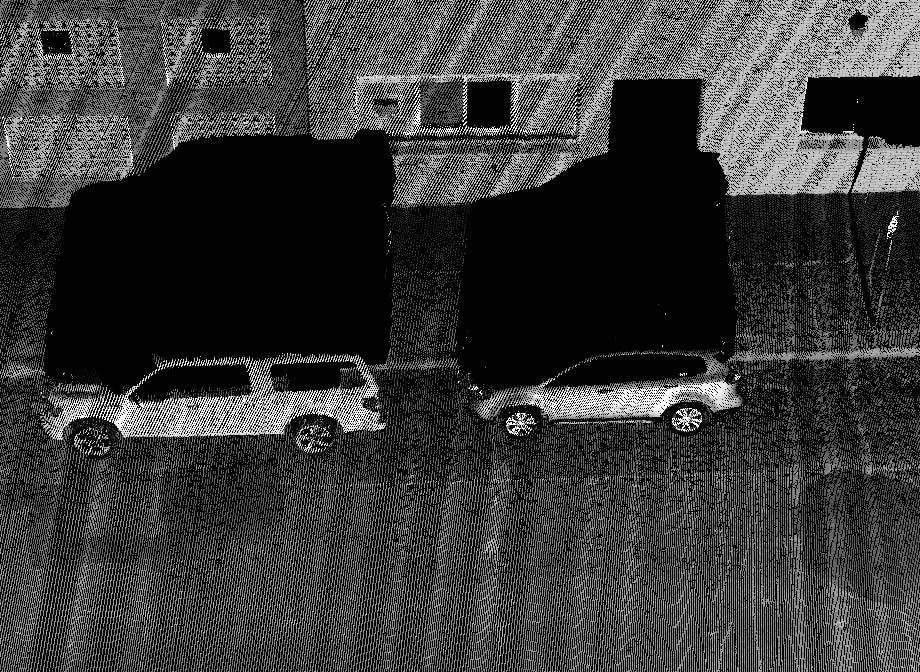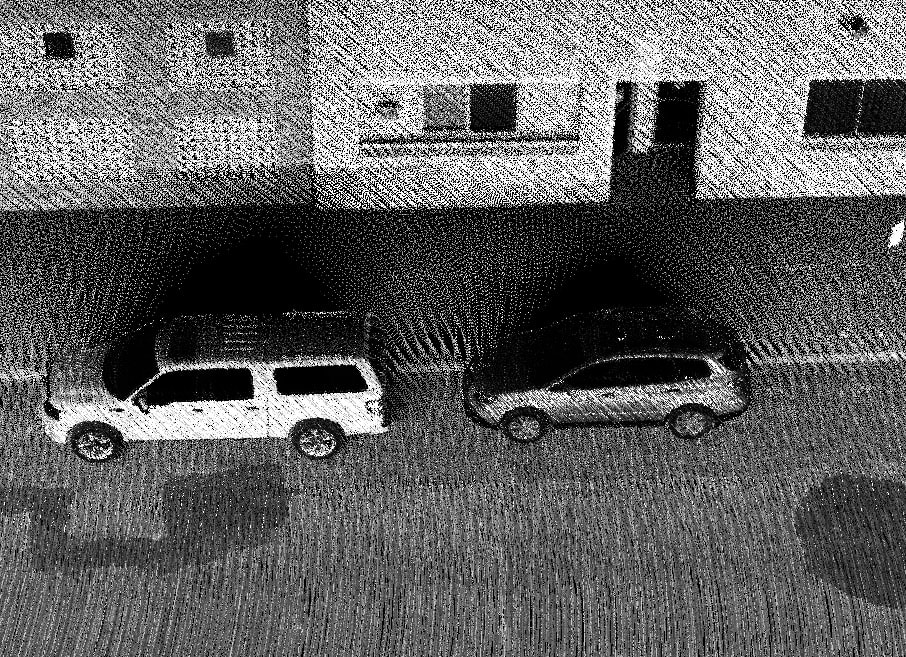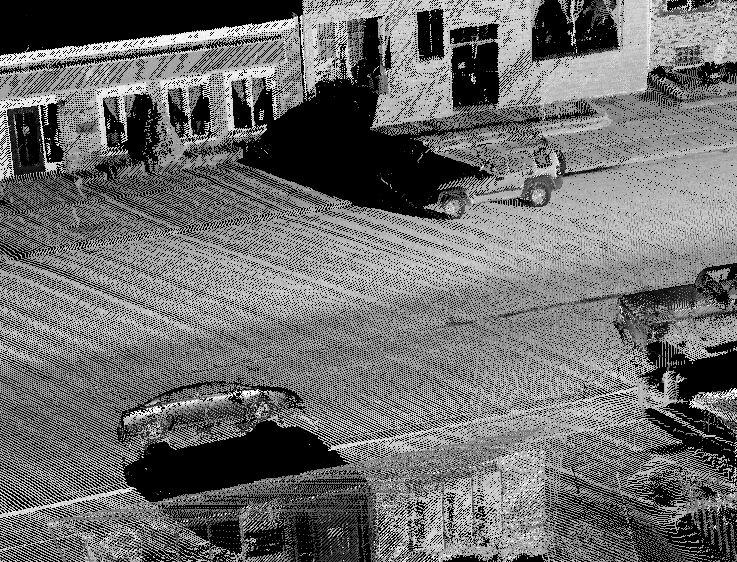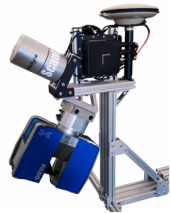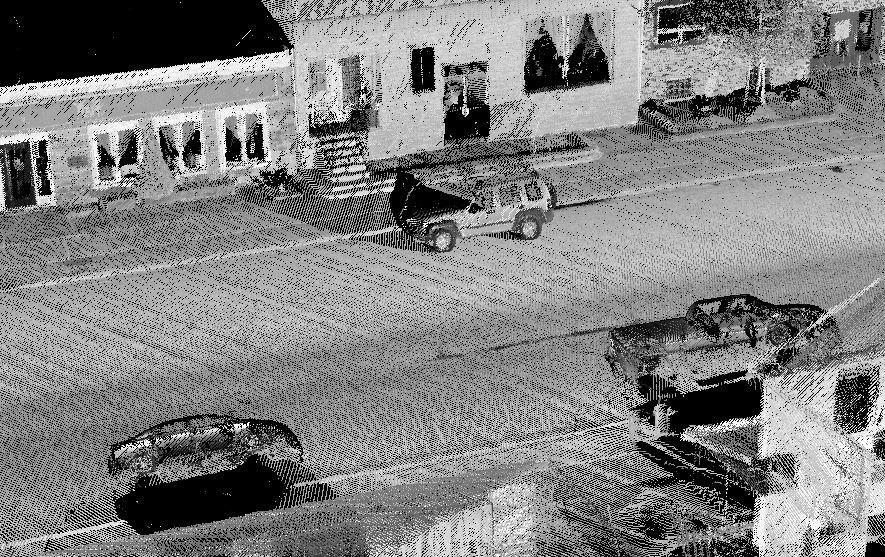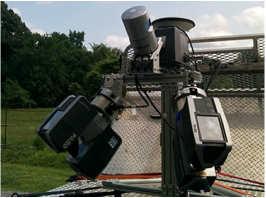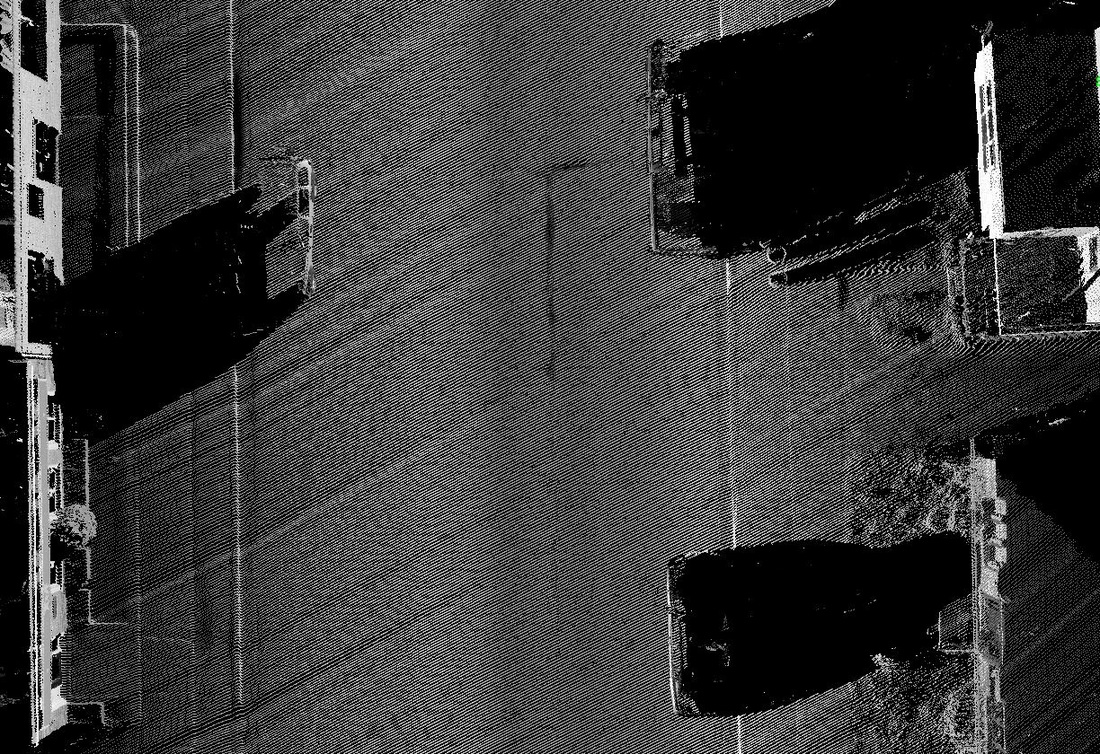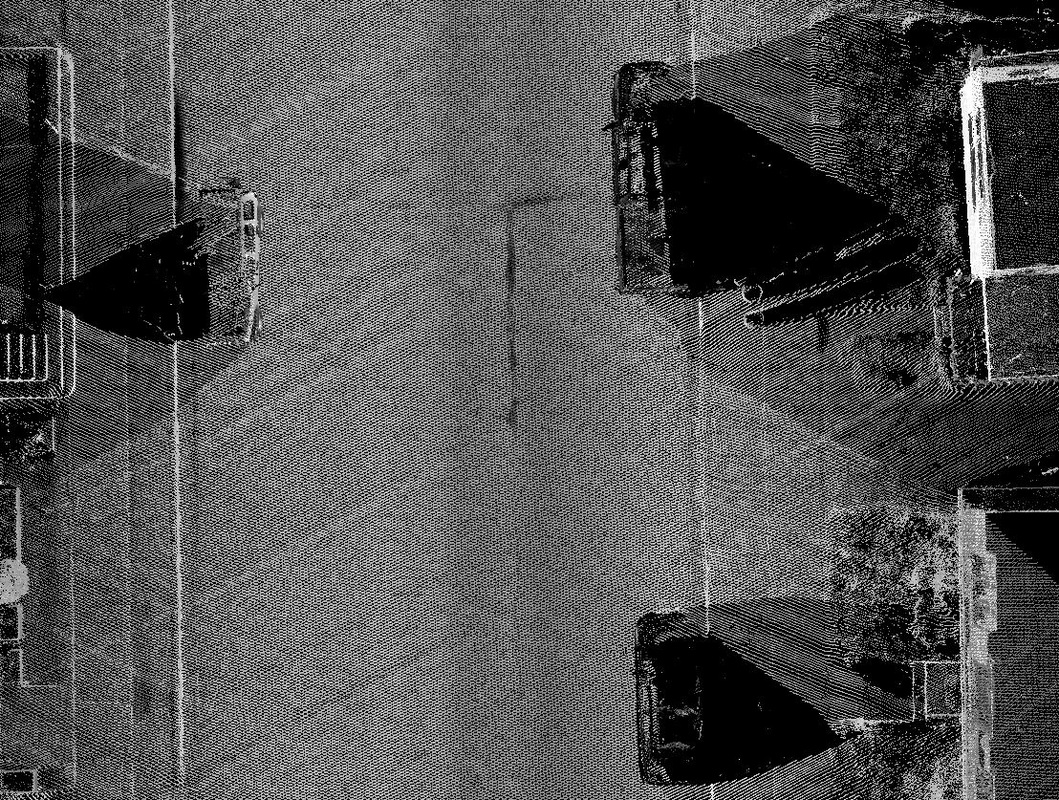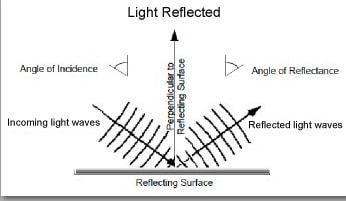A ScanLook scan using the FARO at 30 degree tilt and about 7.5 high from the back of a van:
At the same time the Velodyne tilted upwards at 45 degrees, just about 1 foot higher:
Notice the drastic reduction in shadowing from the Velodyne scan.
*Note: The top picture shows the amount of shadowing that can and will occur using any single line, single scanner mobile system. It is very similar to the shadowing from a static scan (hence the many setups required with a static scanner to capture most scenes). Using a dual, butterfly pattern with single line scanners will significantly reduce the amount of shadowing but it will still not be nearly as complete as the Velodyne HD32 with 32 lasers in a 40 degree FOV.
*Note: The top picture shows the amount of shadowing that can and will occur using any single line, single scanner mobile system. It is very similar to the shadowing from a static scan (hence the many setups required with a static scanner to capture most scenes). Using a dual, butterfly pattern with single line scanners will significantly reduce the amount of shadowing but it will still not be nearly as complete as the Velodyne HD32 with 32 lasers in a 40 degree FOV.
Notice the drastic reduction in shadowing from the Velodyne scan.
*Note: The top picture shows the amount of shadowing that can and will occur using any single line, single scanner mobile system. It is very similar to the shadowing from a static scan (hence the many setups required with a static scanner to capture most scenes). Using a dual, butterfly pattern with single line scanners will significantly reduce the amount of shadowing but it will still not be nearly as complete as the Velodyne HD32 with 32 lasers in a 40 degree FOV.
*Note: The top picture shows the amount of shadowing that can and will occur using any single line, single scanner mobile system. It is very similar to the shadowing from a static scan (hence the many setups required with a static scanner to capture most scenes). Using a dual, butterfly pattern with single line scanners will significantly reduce the amount of shadowing but it will still not be nearly as complete as the Velodyne HD32 with 32 lasers in a 40 degree FOV.
Effects of Shadowing
|
The Disadvantage. We are often asked how laser scanning range affects the mobile laser scanning system (i.e. ScanLook). In particular, ScanLook utilizes the FARO FOCUS 3D (F3D) with an advertised distance of 120m for the 120 and 330m for the X330 and the Velodyne HD32 with a distance of 70 to 100m (depending upon the literature).
|
The FOCUS Success. Let’s step back for a moment and evaluate the F3D from a static scanning perspective. Up until October 2010 FARO was virtually unknown to surveyors and mappers. Since that time the F3D has completely dominated the static scanning market. Its range is much less than that of many of its competitors yet it has yielded an unexpectedly high volume of sales. This can only mean that the range is either not that important or there is something else being overlooked. The initial reaction by many speculators was that it was too small, light, and fragile with a short scanning range. Apparently they were wrong. Sure, the price is drastically reduced but that’s nothing new. There are other systems available for much less and yet they don’t have near the appeal. If the F3D was a fad, it would have passed by now. We can only assume then that users are buying the F3D and making a profit using it. The range must be significant and competitive in some markets.
Traversing & Surveying. Thinking as a surveyor using a total station, distance is important. It makes a big difference in traversing. While traversing, the longer the legs of each traverse side the quicker the job can be finished. In addition, a total station can be used for topographic collection. In this case, the rod-man must walk to each distinct point to collect the XYZ data and other attributes. The more information necessary, the longer it takes at each station. If the traverse stations are set far apart, then not only does the time increase to collect the topography but so does the difficulty obtaining line-of-sight to all data necessary. Often this requires additional setups with the total station (and level).
It would be foolish in most cases to use a static scanner simply for traversing. It can be done but it would be painfully slow. Scanning is done to capture the 3D environment. Traversing just happens to be part of the workflow to join each setup into a seamless result. The fame that the F3D has is it can do short legged setups very, very fast with a light instrument so it’s not burdensome in the field. At each setup everything within a 100 to 150 feet radius is captured.
Some manufacturers have much greater range scanners but can they scan down a roadway or through a neighborhood faster? Not usually. The reason is influenced largely by the instrument height, the angle of incidence, and the lack of line of sight to all areas of interest. At about 5.5 feet instrument height the angle of incidence quickly degrades with distance as seen in this table:
It would be foolish in most cases to use a static scanner simply for traversing. It can be done but it would be painfully slow. Scanning is done to capture the 3D environment. Traversing just happens to be part of the workflow to join each setup into a seamless result. The fame that the F3D has is it can do short legged setups very, very fast with a light instrument so it’s not burdensome in the field. At each setup everything within a 100 to 150 feet radius is captured.
Some manufacturers have much greater range scanners but can they scan down a roadway or through a neighborhood faster? Not usually. The reason is influenced largely by the instrument height, the angle of incidence, and the lack of line of sight to all areas of interest. At about 5.5 feet instrument height the angle of incidence quickly degrades with distance as seen in this table:

